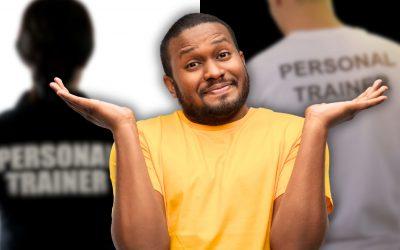Well, firstly, I think sometimes we give too much credit to our programming. We give too much credit to our programmers, too much credit to our coaches. There’s this concept called a black box model, which you may be familiar with. It basically says that there’s an input into the body, into the system and then there’s an output. The input is the stimulus that you’re applying to the body, your training, et cetera. The output is the result of this, improvement, changes, strength, cardiorespiratory endurance, improved output, basically.
In the middle is this black box. To a degree, we really, still, have no idea what goes on in there. We know we’re applying a stimulus. We know that there’s a positive result at the end, and of course we understand how things like energy systems work, and we have a good knowledge of exercise physiology, but we’ve only just scratched the surface. We’re going to be learning more and more about this and more about how stimulus creates change and what’s actually happening inside that black box. We’ll start to turn that black box clear and then get a better picture on how we can best help our athletes.
So when people say they’re peaking for a certain time, again, yes you can to a degree, but I think we give too much credence to this process, and we sometimes think that we know more than we actually do. I can only speak from myself, but I know so very little compared to how much I need to know, and hopefully how much one day, I will know.
That asterisk or that preamble aside, I think we can look at peaking in two sort of capacities. The first is talking about periodization. Now, you may have heard me talk before or read things I’ve written on periodization. This standard model of periodization where you start off with some sort of strength phase and then maybe you build into a power phase and then more of a localized muscular stamina and finally a cardiorespiratory endurance phase, where you’re building each phase on the previous one. Now, this is a model that although it has applications in some areas, I believe there’s a better model for the functional fitness athlete, where instead of working on a predetermined set of phases, you begin by working on the athlete’s major weakness and then maybe mid-season you work on major weakness plus minor weakness, and then towards the end of the season, you start to bring in their strengths as well as these major and minor weaknesses.
So, for someone who’s following a traditional model of periodization, yes, you do need to peak for a certain point, because the periodization is based on the fact that you don’t have certain elements that you’ve developed halfway through the season. For example, you haven’t worked on putting the polish on the cardiorespiratory system. For a traditional model of periodization, yes, I think peaking is important and is possible, because you’re not building those glossy finishes to your fitness until towards the end of the season.
The second element, I think, of peaking, and we can talk about, is a taper. Now I’ve written about this. If you jump on rangeofmotion.net.au, there is an article on there about tapering and a bit of a review of the literature there. Tapering, yes, absolutely. This is more of a sort of micro-view done ten to zero days out from competition. In terms of of peak, there, yes, absolutely.
But to summarize that, I think we put too much credit to the people who are programming, myself included, that we can actually create a peak. I think with a competition like the CrossFit Open, because we’re trying to strengthen and develop our weaknesses, peak, not necessarily so important, because we don’t really have much time to lose when it comes to weakness eradication.




